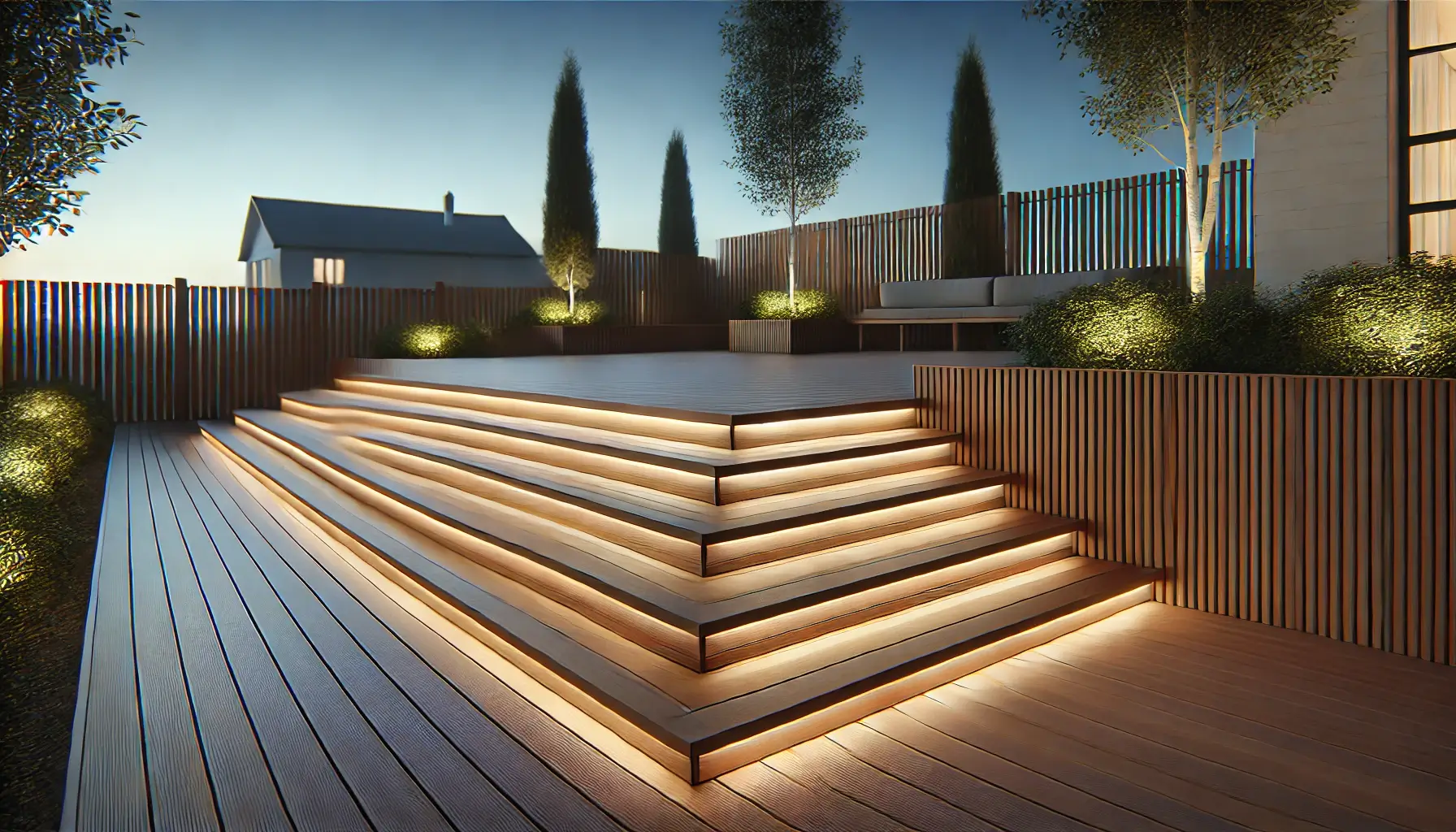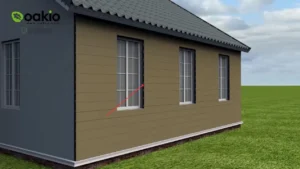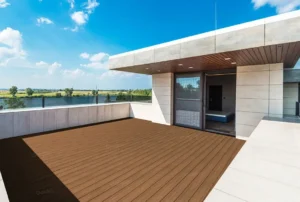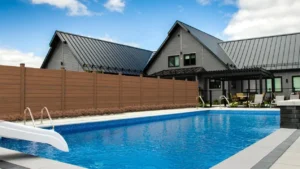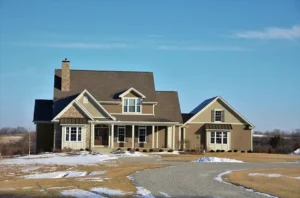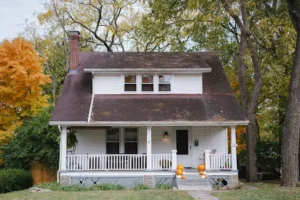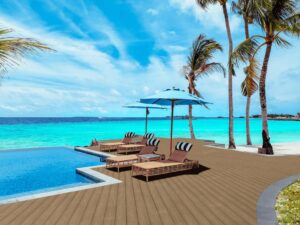WPC Decking: Style and Color Customization for Every Space
WPC (Wood-Plastic Composite) decking has emerged as a versatile and sustainable choice for flooring in residential, commercial, and public spaces. By combining durability with innovative design, WPC decking caters to the growing demand for stylish, eco-friendly solutions. Today’s advancements in WPC decking focus on customizable colors, diverse patterns, and cutting-edge manufacturing techniques, making it a favorite for modern architects and homeowners alike.
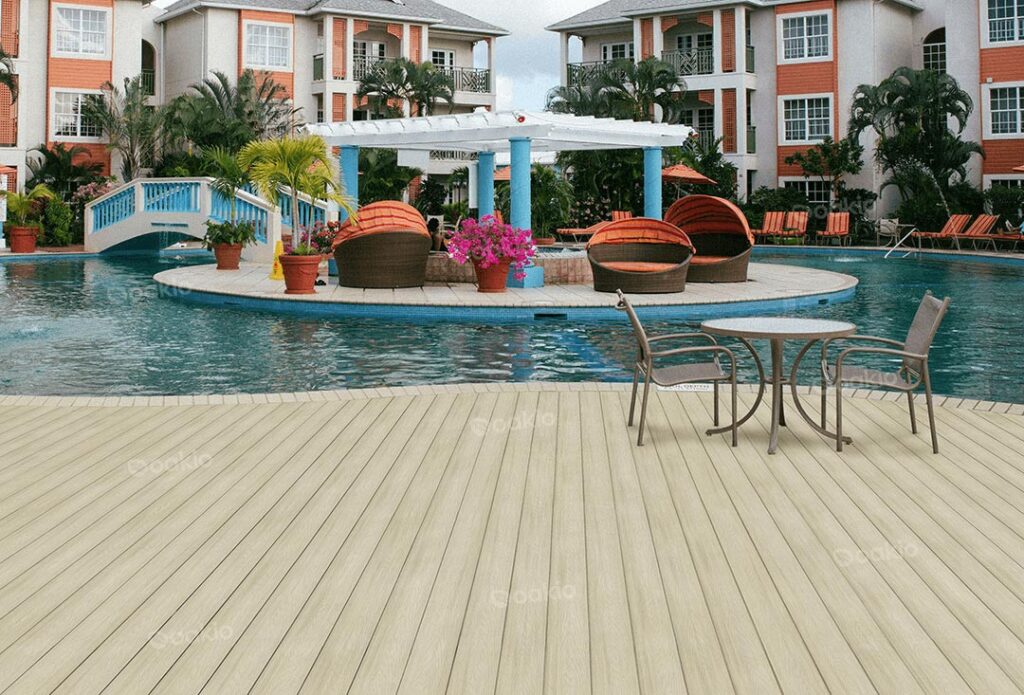
WPC Decking: A Revolution in Style
Traditional decking materials often fall short in meeting the aesthetic and functional needs of modern spaces. WPC decking, however, has redefined this segment by offering a wide range of styles and patterns that go beyond the basic wood-like textures.
Modern manufacturing processes enable intricate designs, from interlocking geometric shapes to textured surfaces that enhance grip and safety. Anti-slip patterns, for instance, are particularly useful in outdoor settings like pool decks and walkways, ensuring both functionality and style.
For designers and architects, WPC decking provides a blank canvas to experiment with decorative flooring solutions. By blending natural aesthetics with contemporary designs, WPC decking is suitable for diverse applications—from minimalist home patios to high-traffic public areas.
Color Customization in WPC Decking
One of the standout features of WPC decking is its ability to offer vibrant and customizable color options. Unlike traditional wood, which requires stains or paint to achieve specific shades, WPC decking incorporates pigments during the manufacturing process, ensuring long-lasting color without the need for frequent maintenance.

Popular Color Applications:
- Public Fitness Areas: Bright and energizing shades like light green, bright red, and pale blue are commonly used to create a dynamic atmosphere.
- Educational Spaces: Soothing tones like soft gray, pale yellow, and pastel blue enhance focus and calmness.
- Leisure Spaces: Rich, earthy colors like moss green, purple-red, and terracotta add warmth and charm to relaxation zones.
Researchers have extensively studied the best coloring techniques for WPC decking. Tests comparing brushing, spraying, and thermal coating methods reveal that brushing delivers superior results in terms of color adhesion, resistance to fading, and vibrancy. This makes brushing the preferred choice for manufacturers aiming to achieve durable surface coloring.
Eco-Friendly Aesthetics
WPC decking is not just about looks; it’s also about making environmentally conscious choices. Manufactured using recycled materials like wood fibers and plastics, WPC decking reduces reliance on natural wood, helping preserve forests and minimize waste.
Sustainability Features:
- Recyclable Material: WPC decking can be recycled, making it a circular and sustainable option for flooring needs.
- Low Maintenance: Unlike traditional wood, WPC decking does not require frequent painting, staining, or sealing, saving resources and reducing chemical usage.
- Fire Safety: Rated B1 for fire resistance, WPC decking offers enhanced safety without compromising on style.
By choosing WPC decking, homeowners and businesses align with green building principles, contributing to a more sustainable future.
Practical Benefits of WPC Decking
Beyond its aesthetic and eco-friendly appeal, WPC decking is packed with practical advantages:
- Durability: Resistant to moisture, pests, and UV rays, WPC decking stands up to harsh weather conditions without warping, cracking, or fading.
- Custom Finishes: The ability to choose from a variety of textures, patterns, and colors allows for tailored designs that match any architectural theme.
- Easy Installation: Interlocking systems and pre-measured boards make installation quick and hassle-free, reducing labor costs and time.
- Versatile Applications: Suitable for patios, balconies, gardens, pool decks, and even public walkways, WPC decking is a universal outdoor flooring solution.
These features make WPC decking a preferred choice for both residential and commercial projects, combining long-term performance with aesthetic value.
Inspiration from Global WPC Trends
Globally, WPC decking has been embraced for its versatility and innovation. International markets, where WPC adoption began earlier, offer inspiration for integrating advanced designs into local projects. For example:
- Industrial Designs: European manufacturers focus on functional designs with features like integrated drainage channels for outdoor applications.
- Custom Patterns: North American brands often incorporate bold geometric patterns, adding a contemporary flair to commercial spaces.
- Environmentally Adaptive Solutions: In regions prone to extreme weather, manufacturers use enhanced composites to create weather-resistant decking with minimal expansion and contraction.
These global trends underline the potential for WPC decking to transform spaces while meeting specific regional needs.
Future Directions in WPC Decking Design
The future of WPC decking lies in its continuous evolution. Research is ongoing to improve its performance and expand its design possibilities. Key areas of focus include:
- Advanced Coloring Methods: Exploring eco-friendly dyes and pigments that offer greater vibrancy and resistance to wear.
- Smart Integration: Adding features like solar-powered lighting or embedded heating for cold climates.
- Enhanced Textures: Developing surface finishes that mimic exotic hardwoods or natural stones while maintaining the benefits of WPC materials.
As technology progresses, WPC decking will continue to bridge the gap between aesthetics and functionality, setting new standards for modern flooring.
Conclusion
WPC decking has transformed from a functional material into a design statement. With its customizable colors, diverse patterns, and eco-friendly attributes, it caters to the modern demand for sustainability and style. From residential patios to large-scale public projects, WPC decking offers unparalleled versatility and durability.
Trending Reading
What Are the Differences Between the WPC Board and PVC Board?
[2024 Update] How Long Does WPC Decking Last?
